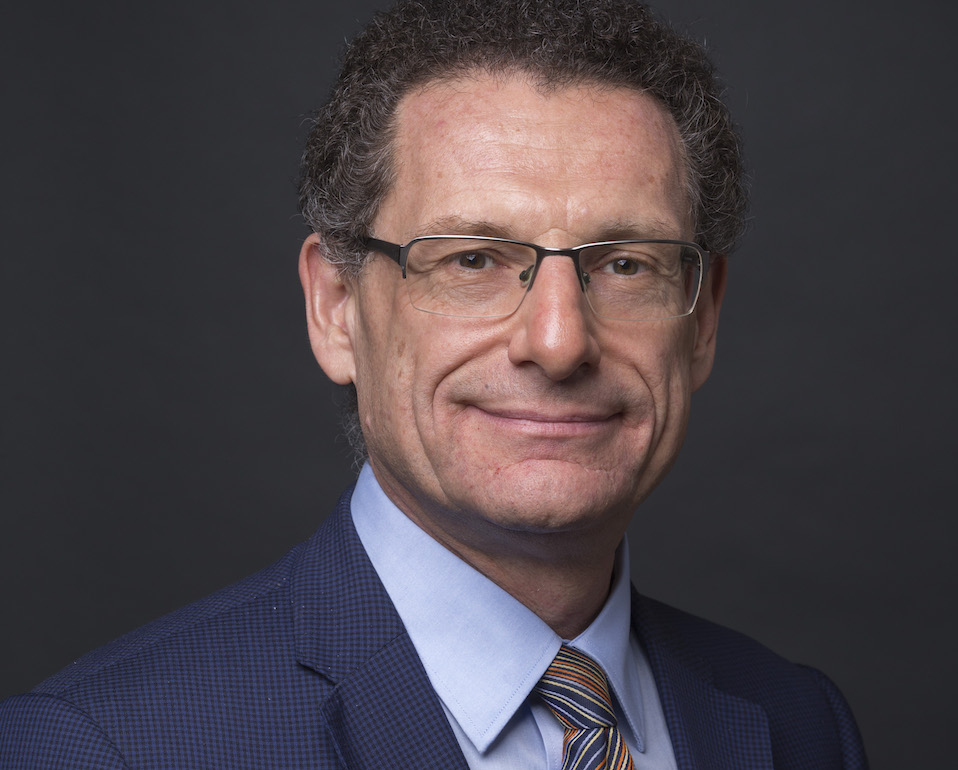Online face authentication is forecast to grow in the next few years as banks and security companies continue to grapple with fraud and the resulting loss of personal data and customer money. Here, Andrew Bud, CEO and founder of iProov explains how he has grown the company and how he bounced back from one of his worst moments as an entrepreneur.
What is the business, when was it started and what were you doing beforehand?
With a team of 25 staff based in London, iProov authenticates online users for logon and ID proofing, using biometric face verification. We are world leaders in confirming the genuine presence of the user, validating human life to prevent spoofing.
Our technology is used by banks and governments around the world for secure customer onboarding, logon and transaction, thus ensuring new and returning users are genuine and guarding against fraudulent attempts to gain access to personal data or use a stolen identity.

We are a diverse team of cutting-edge developers and world-class university academics with a leadership team of individuals who have experience in building and running global-scale internet services.
Before founding iProov in 2011, I was the Founder of mBlox Inc., the largest provider of enterprise-to-consumer text messaging in the world. During my tenure from 2000 to 2010, first as CEO and then as Executive Chairman, the company grew from scratch to process four billion transactions per year with revenues of over £75 million, and was sold in 2016 for £90.4 million.
How did you get the idea, and what opportunity did you see when you started the business? What are your sales and what do you expect the turnover potential to be?
In 2007 when I was the Executive Chairman of mBlox Inc., the company was one of the largest processors of SMS mobile payments in the world. Not only did it clear and settle around £386 million a year, but it also had low fraud rates, growing revenues and happy mobile operators.
However, in 2008, we ran into serious trouble. Fraudsters in the UK discovered how to fake consumer consents and many consumers lost money.
“My feet were held to the fire by the press, which gave me the salutary choice of admitting to complicity or negligence!”
Subsequently the company was in fact commended by the regulator for its exemplary handling of the incident.
Though extremely unpleasant at the time, this incident taught me just how crucial good, strong authentication is. Not only should it be simple enough to serve the needs of impatient mobile users, but also secure enough to withstand the attention of even the most determined, sophisticated attackers. There wasn’t anything adequate on the market capable of delivering this, so I just had to invent the solution.
Having created it, it became clear this would help overcome one of the most fundamental challenges of the online ecosystem – the establishment of trust between remote parties. That is a big opportunity – analysts projections estimate the market for online facial verification to be worth approximately £2.3 billion in the next few years. We are growing very fast and this year our turnover will be in the several millions.
Further reading on entrepreneurs
- Entrepreneur interview: Zarir Vakil, StepJockey
- Entrepreneur interview: Tom Pickersgill, Broadstone
- Entrepreneur profile: Evan Goldberg, NetSuite
How did you finance it and what were the challenges of that?
Financing a start-up whose revenues come at the far end of a heavy R&D programme is not all that easy.
First, we were fortunate enough to be a UK company, which has meant that since 2013 we have received incredible support from Innovate UK, and have won grants of £1.4 million to support our research and development.
Second, this has helped us raised substantial equity from private investors, aided by the EIS tax breaks.
Finally, some visionary individuals were crucial, and we were also helped in this respect by matchmaking at the Goldman Sachs Disruptive Technology Symposium.
What were your key marketing strategies?
We were guided by three key principles. First, focus on what we excel at – secure online face verification. It’s terribly easy to be distracted in the early start-up years by neighbouring needs and problems, and to be led into trying to develop much broader solutions. We decided what not to do, and when to partner rather than build. Even now partnerships remain foundational to our strategy.
Second, discover the market, don’t assume it. It’s the customers who tell you what they want to use an innovation for and you have to spread yourself thinly until you find that out. Premature marketing focus can be fatal. This is how we became leaders in onboarding.
Finally, we focused on large, high profile customers rather than start-ups like us. This made the sales cycle much longer, harder and delayed revenues. But once we won such customers, this completely transformed the business. Today our reputation is built on customers like the U.S. Department of Homeland Security and Dutch bank ING.
What are the revenue streams?
Our revenues are the recurring fees typical of a SaaS business – monthly service fees plus volume-related charges. It makes our business stable and creates an engine for extremely fast growth. Most of our revenue come from several different territories outside the UK, giving us added stability in periods of economic uncertainty.
What are the main challenges you have experienced and seen?
Our biggest challenge was to wait for the market to understand the importance of what we do. Face verification technology has been around for a long time, yet no one worried much about fakes. This meant it’s take years for buyers to decide that genuine presence actually lies at the heart of biometric security, and that our unique solution – so far superior in usability and security to anything else available – met their profound need.
Now that we have accomplished that, we have some of the smartest people in the world, whether in state secret services or criminal enterprises, against us. To keep our customers safe, it’s therefore even more important to keep our technology advancing and innovating to stay ahead of them.
What advice would you give to early-stage businesses looking to disrupt markets?
Find the problem you need to solve. The majority of early-stage companies begin their pitch by explaining that their disruptive technology will save customers 20 percent of some cost. I’ve learnt from past experience that that kind of thinking leads straight to failure.
Big innovations win only if they solve big problems for customers, so focus on finding and solving them.
“You’ll be astonished how many problems there are and how hard large incumbents find it to address them”
Husband your cash until you’ve done so, because you don’t know how long it will take. This process always takes longer than you think.
Perhaps most importantly, do something your team love. Big ideas get everyone out of bed in the morning, even when the going gets tough. I spent nearly 30 years innovating in the mobile communications industry, changing the way people communicate. Now, online trust is an even more exciting challenge for the future of our society.







